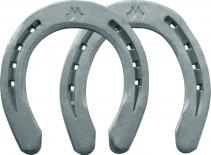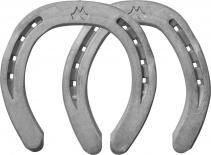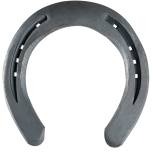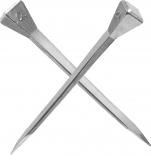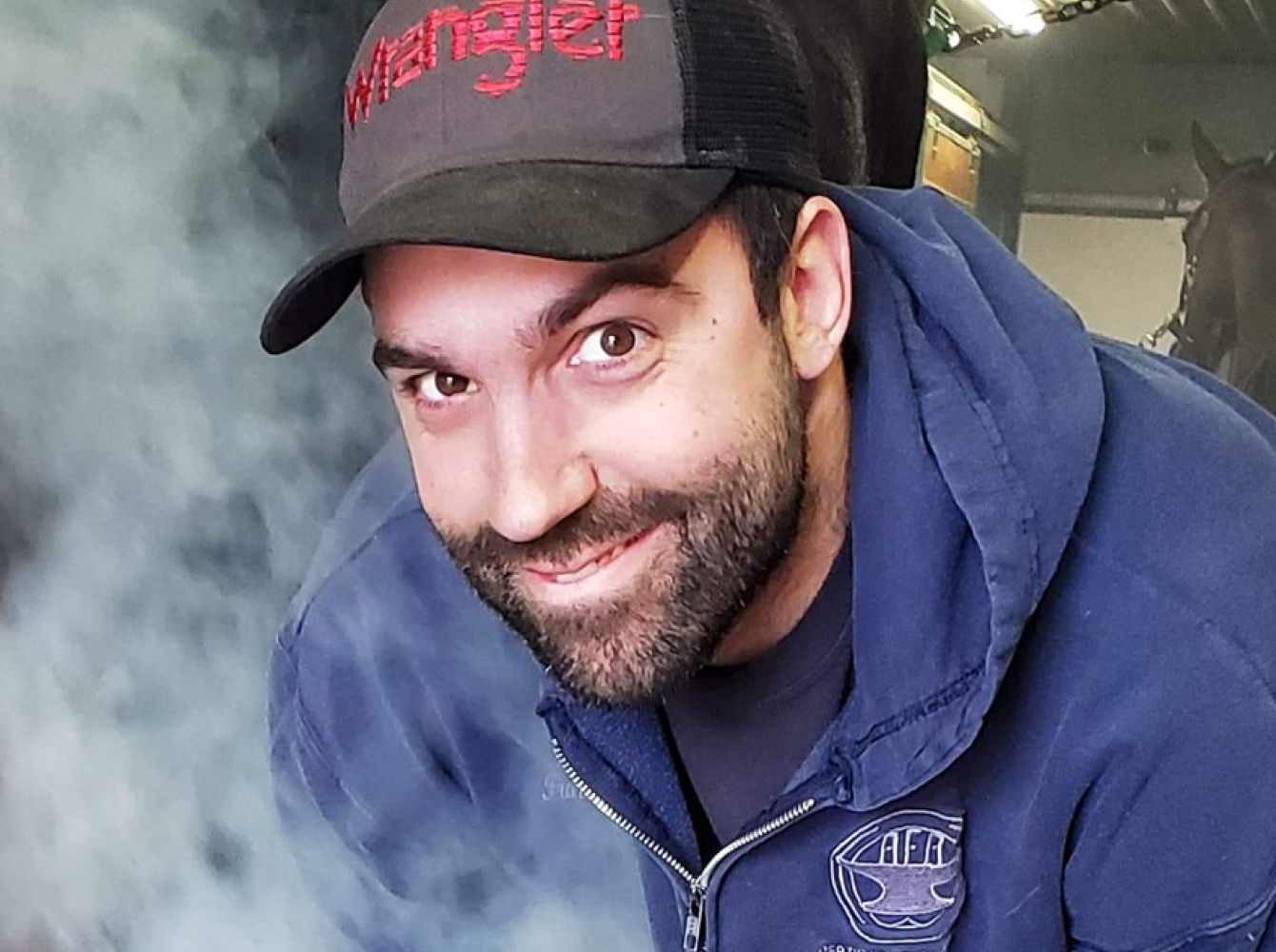
Francis Dufresne-Cyr, CJF
“The hoof is just the consequence. It doesn’t make sense to just treat the consequence.”
“The more I asked, the more I felt I needed to know.”
As a young man in Quebec, Francis Dufresne-Cyr, CJF was both a competitive barrel racer and a bronc rider. While his heart belonged to his horse, Colonel, Francis wasn't ready to decide on a career. At the very least, the one job he picked up that didn’t involve horses—working in the factory where his Dad was an accountant—convinced him to go back to barns and horses in some way. Even so, Francis did not yet see himself as a future farrier, as his father encouraged him to pursue higher studies.
He was attending the University of Montreal, studying history and mucking out stalls for money, when he noticed that the farrier, Reginald Castonguay, stopped by frequently. With Colonel having navicular disease at the time, Francis quickly began peppering Reginald with questions that he hoped would help his treasured horse. Questions led to more questions, and that led to a simple recommendation to attend farrier school.
So Francis quit college and enrolled in the Quebec Horseshoeing School, three hours from Montreal. The first days were hard. He knew his way around a horse, but forging challenged him. “I had to learn the tools. My hands were sore. Everything was sore.”
But after the first week, things changed for the better. Francis and four of his classmates overcame their initial hesitation to work together and started helping each other out. Soon enough, the group realized they had complementary skills. One was good at forging, another at horsemanship, and a third—Francis—at theory.
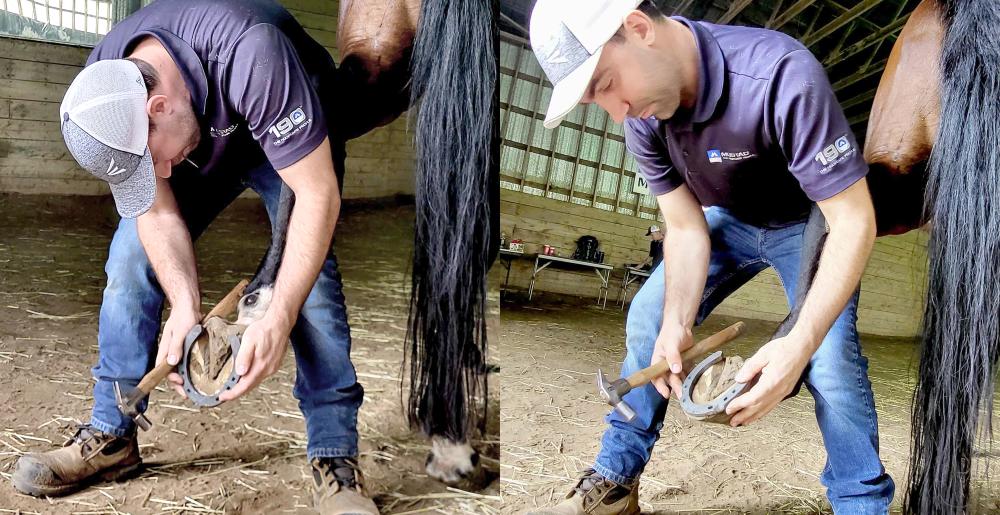
Every time one of us struggled, we’d help each other out.
The fact that all five are still shoeing—and that Francis is regularly in touch with two of them— is a testament to the role cooperation plays in successful horseshoeing.
Of course, school was just the beginning of his education. He would complete his initial education with two apprenticeships. The first, at only two days a week, was invaluable. But the second, with Remi Gauvin, took his farriery skills to the next level, just as it also required several more days of his time each week.
“That’s when I really started loving my job. Remi really gave me confidence in my capabilities. He always told me how to improve without saying that I was bad or that I was doing something wrong. He helped me on a personal level too, like being more patient and more accepting of things that were hard. I’ll still get his opinion about complicated cases.”
That newly developed confidence was about to be tested.
The Story of Colonel and Duke
While Francis’ beloved horse got him into horseshoeing, a young girl’s lame horse kept him in it.
Colonel had been Francis’ horse since he was a boy, just starting barrel riding. But the horse developed a severe case of navicular disease. As a farrier, Francis believed he should be able to save the horse he had for 17 years. After a long bout of trying just about everything he could, Francis inevitably learned one of the hardest lessons a farrier has to learn—you can’t save them all.
And that single, heart-wrenching loss nearly drove him out of the profession. “I couldn't save my horse. That was one of the reasons I went into horseshoeing—to save him. And I couldn't, so I felt like I failed.”
But after losing Colonel, he got a call to help a 13-year-old girl whose horse, Duke, was facing severe, life-threatening issues. “She was crying in front of the horse and said, ‘You can’t let him die.’” Duke suffered from severe laminitis and a navicular problem. One stressed the back of the foot; the other, the front. There was not going to be an easy fix.
“I needed to make something that allowed Duke to shift his weight. Whenever he was hurting more in one place, he could shift to the other. I also had to open the front part of the foot because of the founder. I made a rolled toe on the foot with good support at the back. And it took time for him to be comfortable, for the foot to grow back. ” But it eventually grew back, and with Duke’s prospects looking up, Francis recommitted to his work as a farrier.
Without Duke, I'm pretty sure we wouldn't have this conversation today. I'd be doing something else.
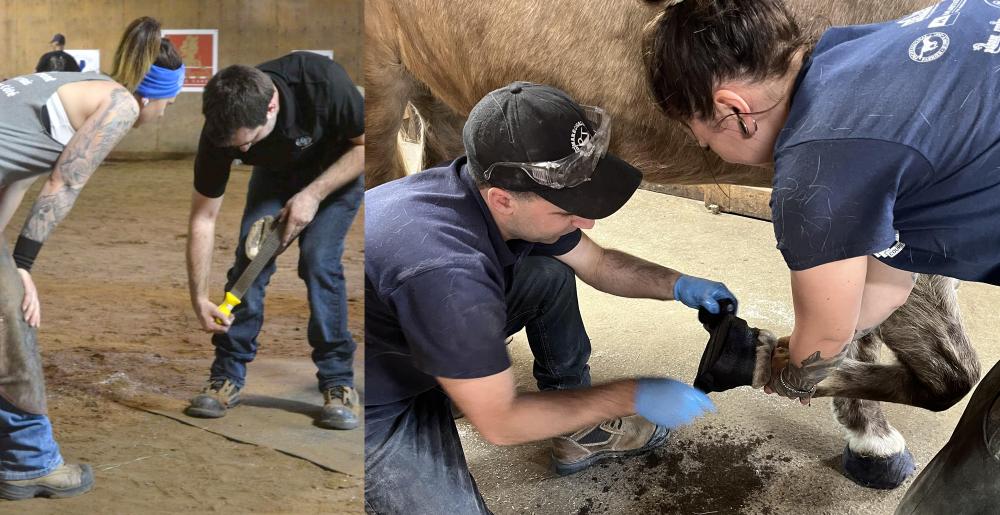
Giving back—and passing it on
His practice is thriving now, and so is his commitment to teaching, including being a mentor to his own apprentice, Catherine Mailloux. For Francis, though, being a successful farrier isn’t just about loving the work and running a profitable business- it’s in the generous gifting of knowledge from farrier to farrier, from teacher to student.
In fact, it was the deep appreciation for his own mentors that convinced Francis to teach in the first place. Because he already regularly helped with demonstrations at the Quebec Horseshoeing School’s open houses, the school sought him out for a teaching position.
At that point, Francis had only been shoeing horses on his own for about two years. So, it makes sense that the young farrier was nervous to start a teaching career.
But Francis found that, between what his mentors had taught him, and his own style of learning, he was a natural. “Since I have to break everything down for myself, it helped me show the students how everything was done.”
While building a business and teaching was demanding in itself, he also started increasing his commitment to therapeutic horseshoeing, working alongside vets in his own practice more regularly.
Francis found himself looking at a new opportunity in 2020 when the main vet hospital in Quebec had an opening for a farrier. It wasn’t long before some of his veterinarian colleagues recommended him for the gig.
Although the work remains challenging—and can be heartbreaking—his visit to Saint-Hyacinthe's vet hospital is one of the highlights of his week.
In fact, as he imagines his next twenty years, he’s looking to teach vet students at the veterinary hospital—which is also a teaching hospital. At the same time, he’s dedicated to expanding the school, offering classes in English as well as French to aspiring farriers from neighboring Ontario.
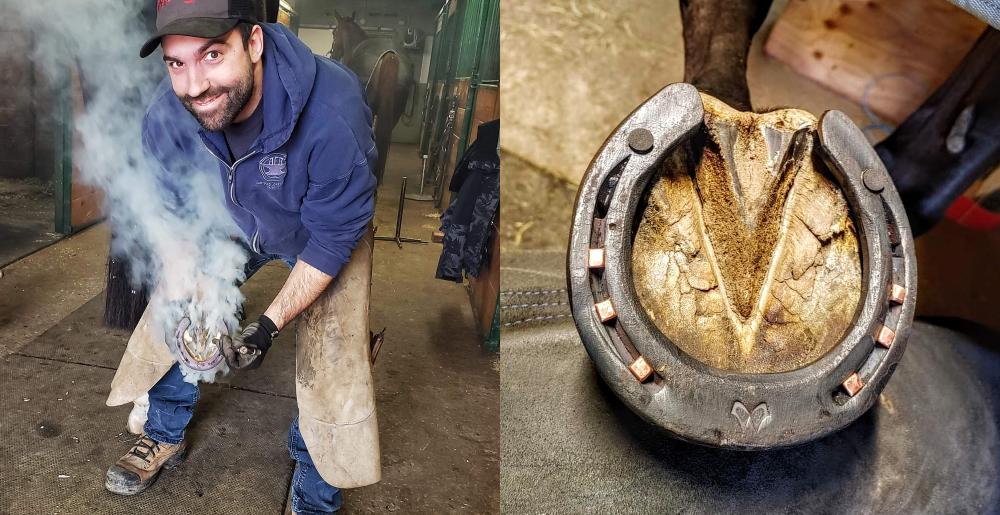
To take the stress off of the situation, I have to ask, what's the problem? What's the cause? Why does everything happen? And how can I treat that?
Q&A with Dufresne-Cyr, CJF
Besides his private practice which emphasizes jumpers, with some dressage and barrel horses, Francis Dufresne-Cyr, CJF teaches at the Quebec Horseshoeing School. He works with Saint-Hyacinthe Vet Hospital and has served as the President of the Quebec Farriers Association. We asked him about his practice and his teaching.
You teach at the Quebec Horseshoeing School. What advice would you give to incoming students?
You can only learn so much in sixteen weeks. So the purpose of horseshoeing school is to prepare you to be a good apprentice. It’s to give you a grounding in theory and forging and some practice in working with horses.
You’ve taught in India as a part of the Flying Anvil’s efforts to spread farrier education to underserved countries. How did that differ from teaching in Quebec?
It’s inspiring because, while they have very little themselves, they want to take care of their horses. I concentrated on trimming because that can make the biggest difference in a short time. Also, I also had to learn some key Hindi terms such as “your right front is too high on the inside.”
You’re not simply an advocate for farrier education- you've also talked about the need for client education. How did you arrive at that?
Clients often know little about what we do. They don't need to know how to do it. But they need to know how complicated it is. And they need to be able to spot if there's something wrong.
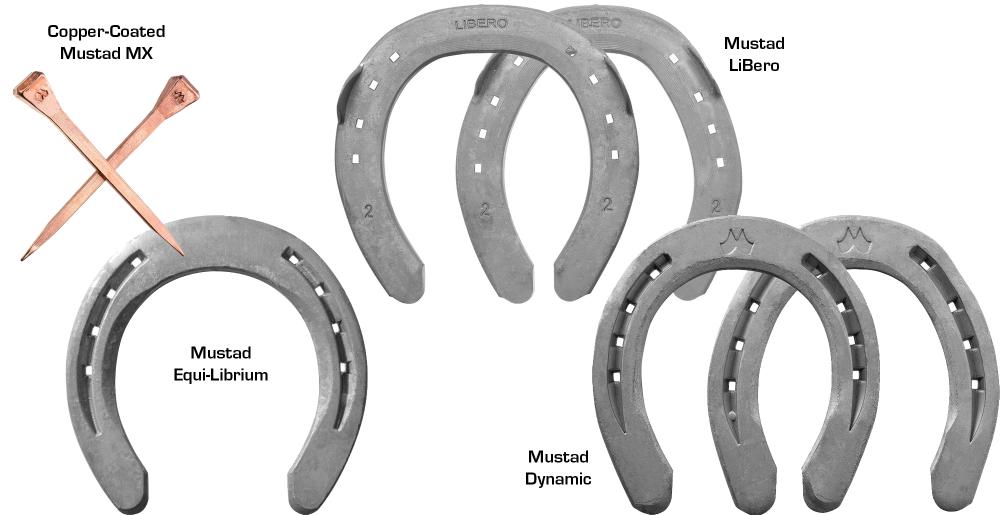
What’s your experience with Mustad products?
A lot of my clients would bring in horses from Europe who’d been cared for by very good farriers, and those horses would be wearing Mustad shoes. I also appreciated that Mustad gives back to the industry.
I use the Mustad Dynamics, especially for the hinds. I really like the shape of the hind. I also like that it doesn’t have a square toe. Most horses don’t need one. I also appreciate that the side clips are between the first and second nail on the fronts. With most other shoes, it’s between the second and third, and that can be too far back.
I love the Mustad Equi-Libriums for the big rolled toe. This is a wet country, so I don’t use many toe clips, but when I do, I use the LiBeros. I use copper-coated nails, mostly Mustad MX because they fit well in the Dynamics and Liberos I use.
What do you do for fun?
I’ve gotten into mounted archery. I’ve always ridden horses. And for a few years, I’ve been shooting arrows with one of my friends. But when I started doing both at the same time, it seemed like I couldn't do either of them. It really helped me to try to divide my mind: my lower body was for the horse. My upper body is for the bow.
Where are you on a Saturday morning at 10?
I might be with my girlfriend, Meredith Hannah, who is a talented horse trainer. She has a dog, so now I have a dog too- a brown Labrador, named Abby.
